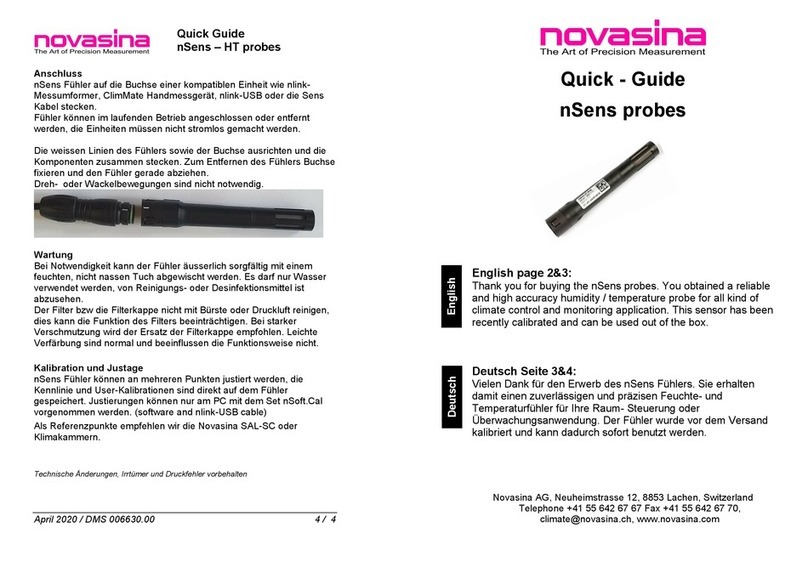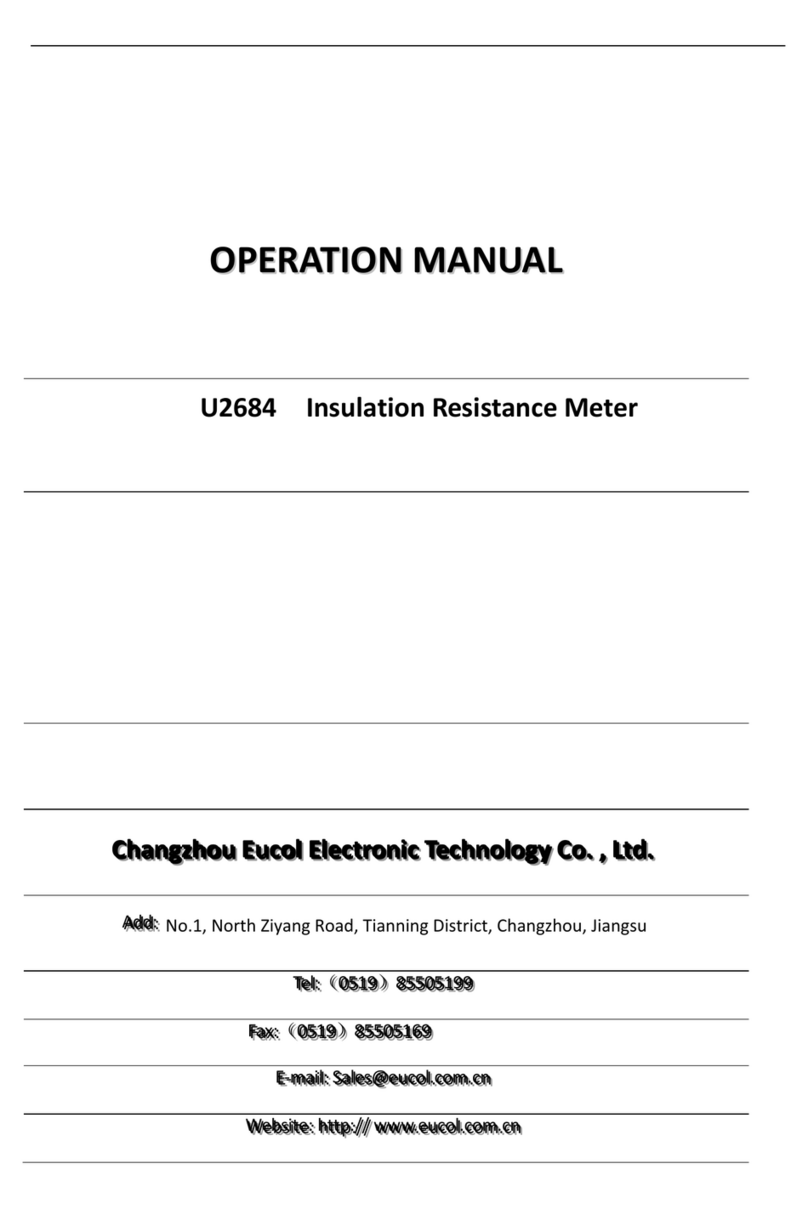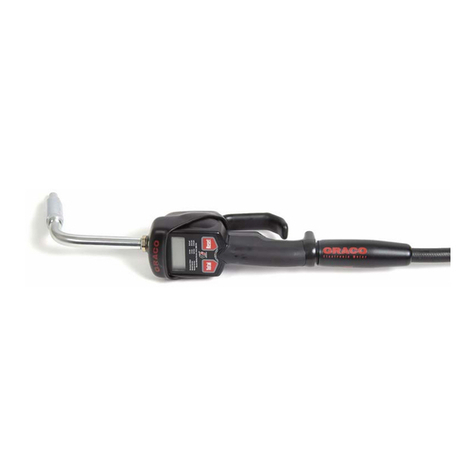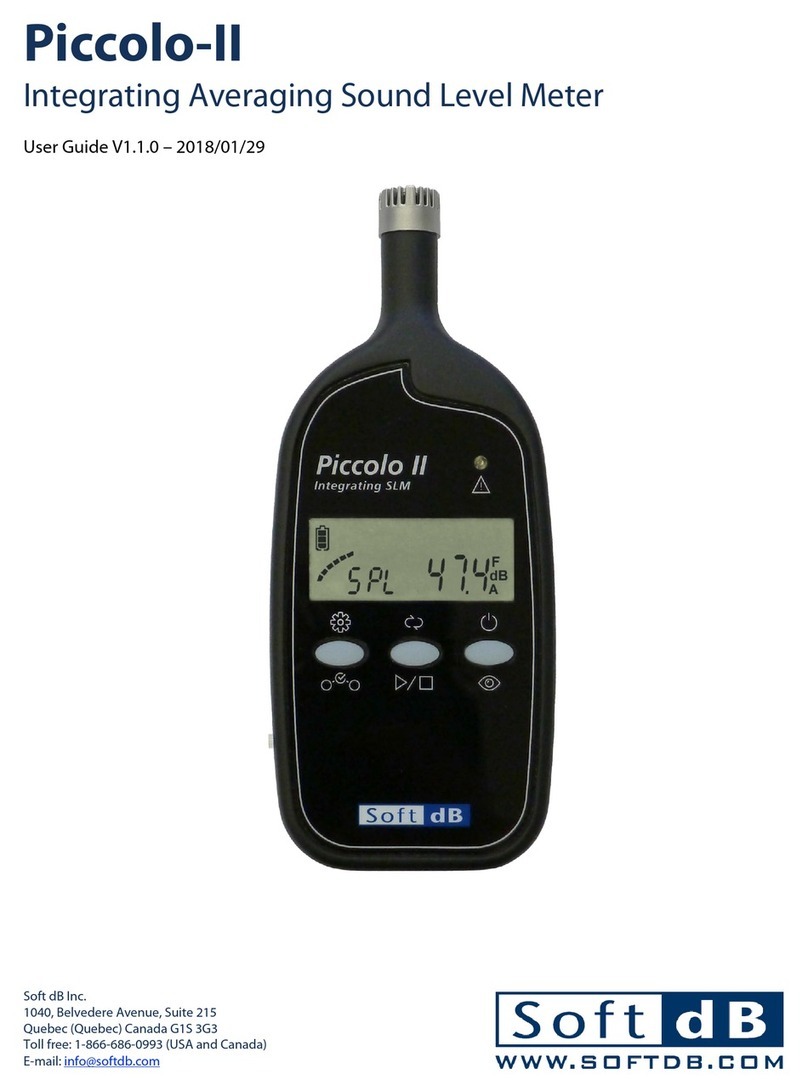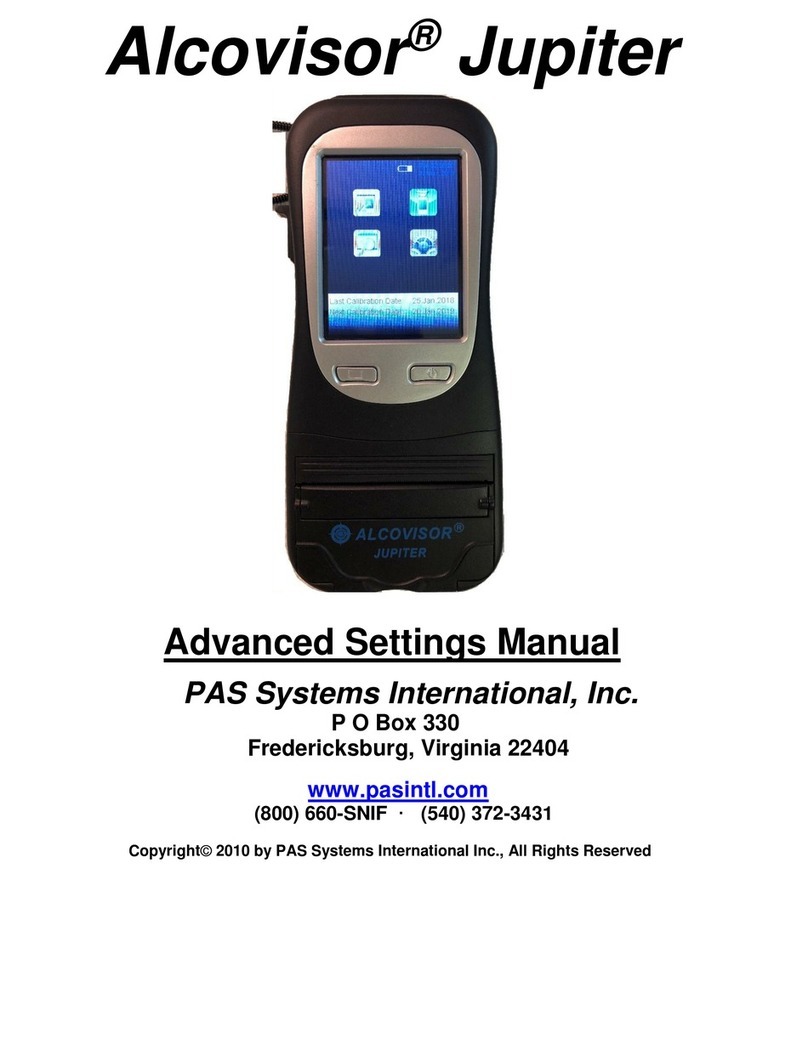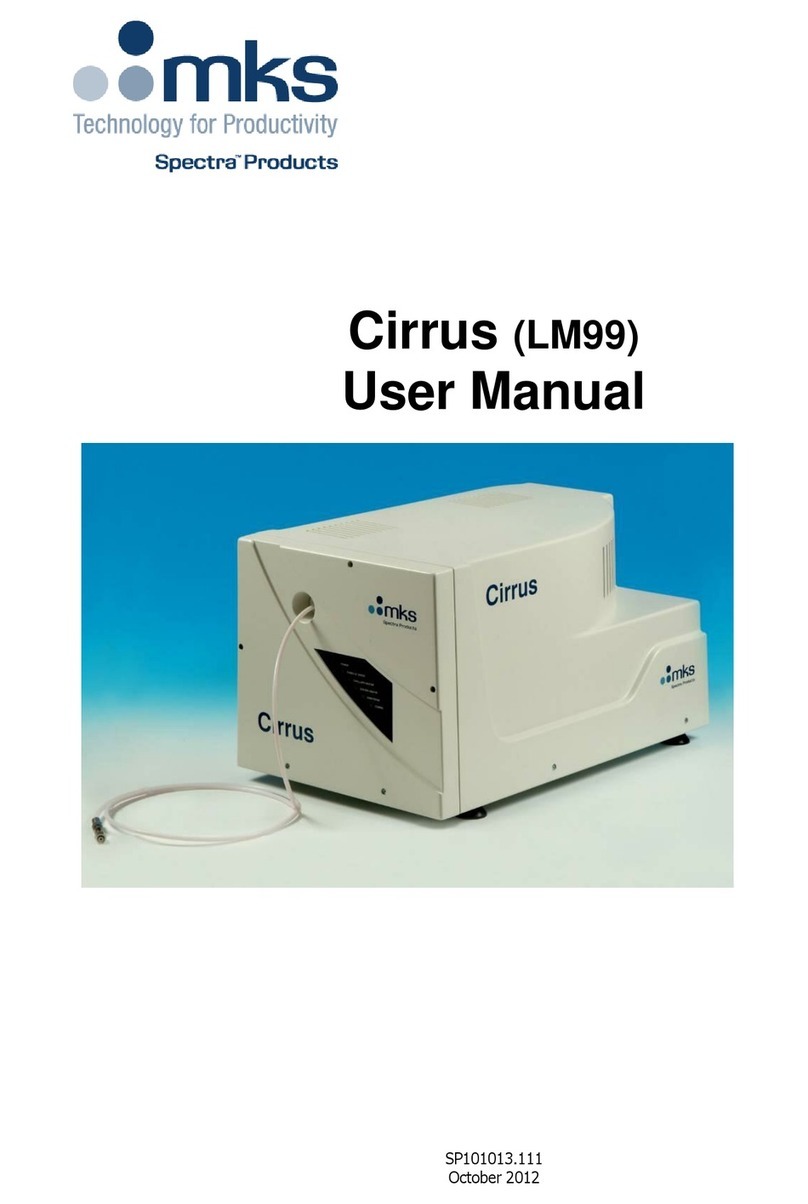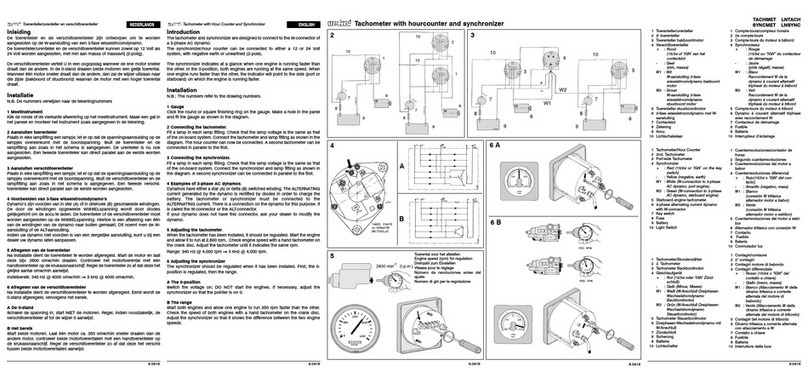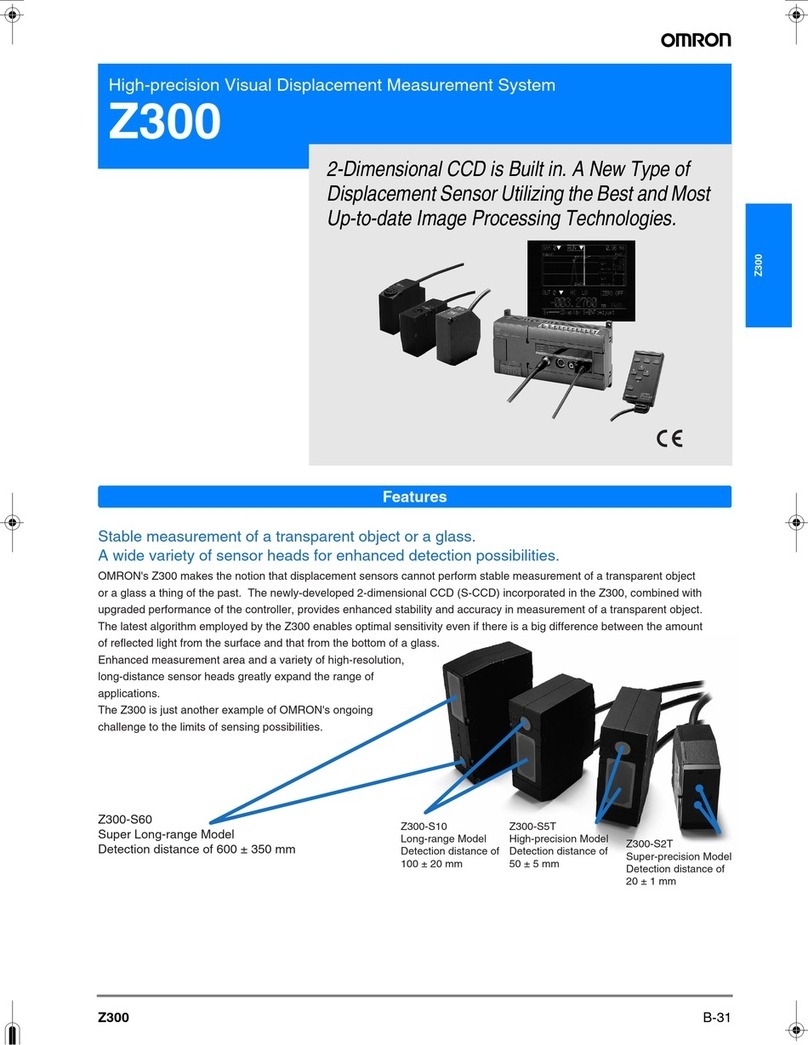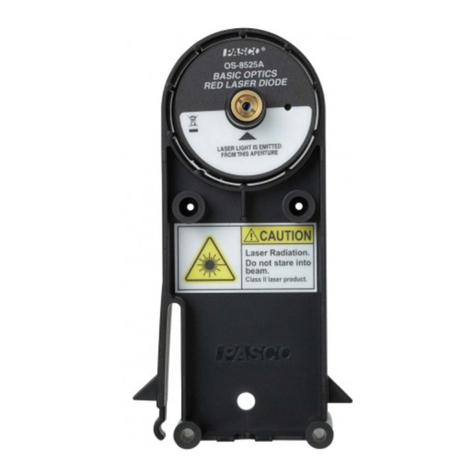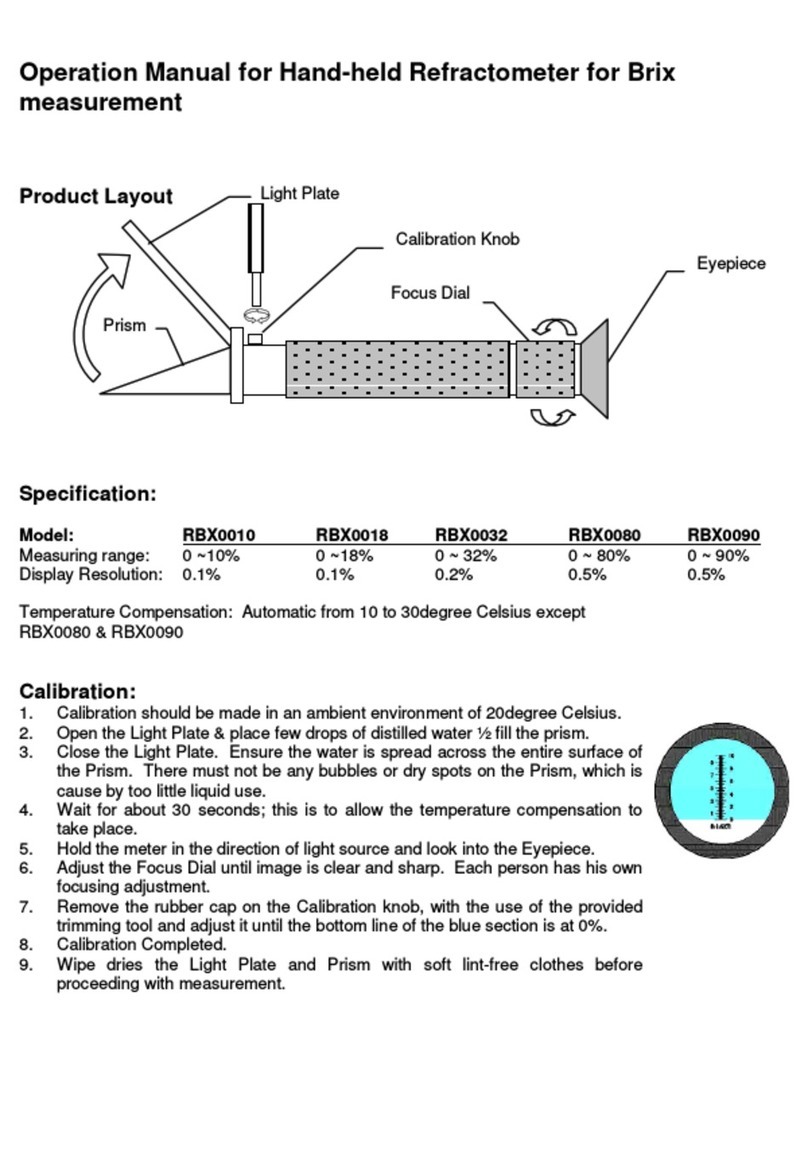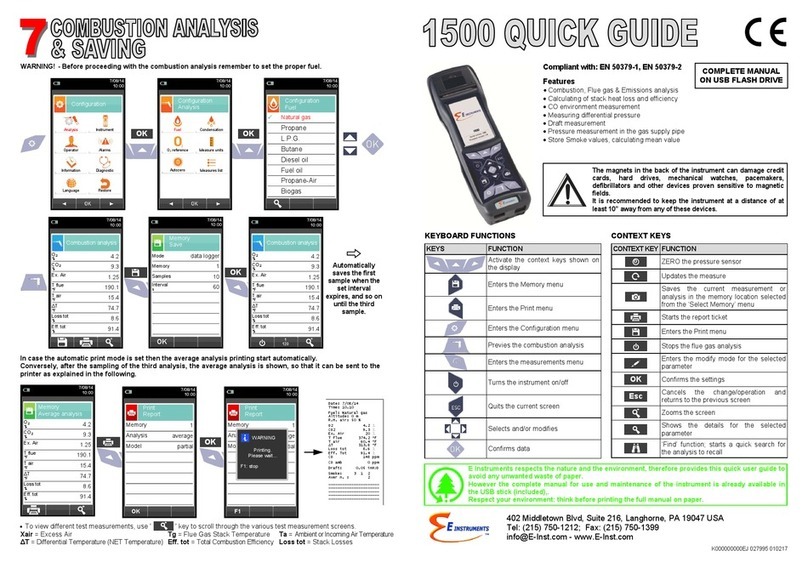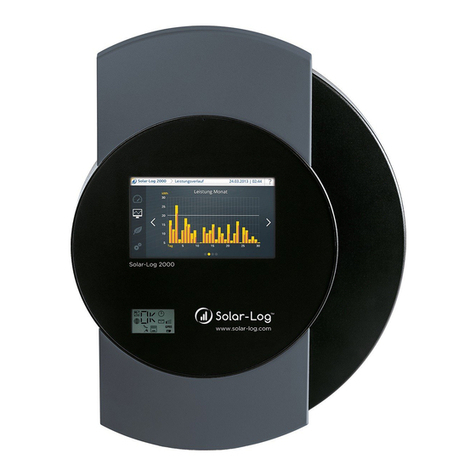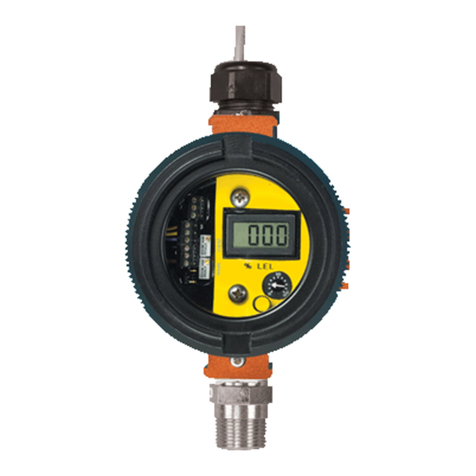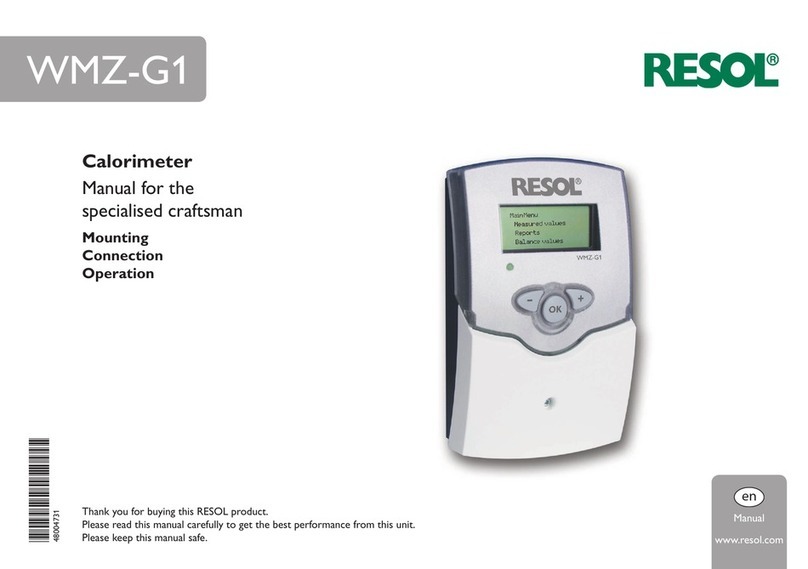Neptune L900 Product manual

5015 B.U. Bowman Drive Buford, GA 30518 USA
Certification Exhibit
FCC ID: P2SL900M
IC: 4171B-L900M
FCC Rule Part: 15.247
ISED Canada Radio Standards Specification: RSS-247
Project Number: 72126503
Manufacturer: Neptune Technology Group Inc.
Model: L900M
Manual

L900™ MIU Pit Installation and Maintenance Guide
L900™ MIU Pit Installation and Maintenance Guide


L900™ MIU Pit Installation and Maintenance Guide

Copyright
This manual is an unpublished work and contains the trade secrets and
confidential information of Neptune Technology Group Inc., which are not to be
divulged to third parties and may not be reproduced or transmitted in whole or
part, in any form or by any means, electronic or mechanical for any purpose,
without the express written permission of Neptune Technology Group Inc. All
rights to design or inventions disclosed herein, including the right to manufacture,
are reserved to Neptune Technology Group Inc.
The information contained in this document is subject to change without notice.
Neptune reserves the right to change the product specifications at any time
without incurring any obligations.
Trademarks used in this manual
L900 and ProRead are trademarks of Neptune Technology Group Inc.
ARB, E-CODER, MACH 10, and R900 are registered trademarks of
Neptune Technology Group Inc. Other brands or product names are
trademarks or registered trademarks of their respective holders.
FCCNotice
This device complies with Part 15 of the FCC Rules. Operation is subject to the
following two conditions: (1) this device may not cause harmful interference, and
(2) this device must accept any interference received, including interference that
may cause undesired operation.
Note: This equipment has been tested and found to comply with the limits for a
Class B digital device, pursuant to Part 15 of the FCCRules. These limits are
designed to provide reasonable protection against harmful interference in a
residential installation. This equipment generates, uses, and can radiate radio
frequency energy and if not installed and used in accordance with the instruction,
may cause harmful interference to radio communications. However, there is no
guarantee that interference will not occur in a particular installation. If this
equipment does not cause harmful interference to radio or television reception,
which can be determined by turning the equipment off and on, the user is
encouraged to try to correct the interference by one or more of the following
measures.
lReorient or relocate the receiving antenna.
lIncrease the separation between the equipment and receiver.
lConnect the equipment into an outlet on a circuit different from that to which
the receiver is connected.
lConsult the dealer or an experienced radio/TV technician for help.
RF Exposure Information
This equipment complies with the FCC RF radiation requirements for
uncontrolled environments. To maintain compliance with these requirements, the
antenna and any radiating elements should be installed to ensure that a
minimum separation distance of 20cm is maintained from the general population.

Changes or modifications not expressly approved by the party
responsible for compliance could void the user's authority to
operate the equipment.
Professional Installation
In accordance with section 15.203 of the FCC rules and regulations, the L900
MIU must be professionally installed by trained utility meter installers.
Industry Canada (IC) Statements:
Section 8.4 of RSS-GEN
This Device complies with Industry Canada License-exempt RSS standard(s).
Operation is subject to the fol¬lowing two conditions: 1) this device may not
cause interference, and 2) this device must accept any interfer¬ence, including
interference that may cause undesired operation of the device.
Cet appareil est conforme aux normes RSS exonérées de licence d'Industrie
Canada. L'opération est soumise aux deux conditions suivantes: 1) cet appareil
ne doit pas provoquer d'interférence, et 2) cet appareil doit accepter toute
interférence, y compris les interférences pouvant entraîner un fonctionnement
indésirable de l'appareil.
Section 8.3 of RSS-GEN
Under Industry Canada regulations, this radio transmitter may only operate using
an antenna of a type and max¬imum (or lesser) gain approved for the transmitter
by Industry Canada. To reduce potential radio interference to other users, the
antenna type and its gain should be so chosen that the equivalent isotropically
radiated power (e.i.r.p.) is not more than that necessary for successful
communication.
This radio transmitter IC: 4171B-L900M has been approved by Industry Canada to
operate with the antenna types listed below with the maximum permissible gain
and required antenna impedance for each antenna type indicated. Antenna types
not included in this list, having a gain greater than the maximum gain indicated for
that type, are strictly prohibited for use with this device.
lMaximum permissible gain of +1 dBi and required impedance of 75 ohm.
lApproved Antenna type(s)
oR900 Pit Antenna, part number 12527-XXX
En vertu de la réglementation d'Industrie Canada, cet émetteur radio ne peut
fonctionner qu'avec une antenne d'un type et un gain maximal (ou inférieur)
approuvé pour l'émetteur par Industrie Canada. Pour réduire les interférences
radio potentielles avec d'autres utilisateurs, le type d'antenne et son gain
devraient être choisis de manière à ce que la puissance rayonnée
isotropiquement équivalente (e.i.r.p.) ne soit pas supérieure à celle nécessaire à
une communication.

Cet émetteur radio IC: 4171B-L900M a été approuvé par Industrie Canada pour
fonctionner avec les types d'antennes énumérés ci-dessous avec le gain
maximal admissible et l'impédance d'antenne requise pour chaque type
d'antenne indiqué. Les types d'antenne non inclus dans cette liste, ayant un gain
supérieur au gain maximal indiqué pour ce type, sont strictement interdits pour
être utilisés avec ce périphérique.
lGain maximal admissible de +1 dBi et impédance requise de 75 ohms.
lType (s) d'antenne approuvé
oR900 Pit antennaaximum
L900™ MIU Pit Installation
andMaintenance Guide
Literature No. IM L900 Pit MIU 09.17
Part No. 13381-001
Neptune Technology Group Inc.
1600 Alabama Highway 229
Tallassee, AL 36078
Tel: (800) 633-8754
Fax: (334) 283-7293
Copyright © 2017
Neptune Technology Group Inc.
All Rights Reserved

Contents
Chapter 1: Product Description 1
Product Description 2
L900 MIU Programming 2
RF Protocol Error Detection 2
RF Frequency Control Algorithm 2
RF Transmission Period and Randomness 2
Low Battery RF Emissions 2
Chapter 2: L900 Specifications 3
Electrical Specifications 3
Transmitter Specifications 3
Encoder Register Interface 3
Specifications - L900 MIU Pit 4
Environmental Conditions 4
Functional Conditions 4
Dimensions and Weight 4
Chapter 3: General Installation Guidelines 7
Tools and Materials 7
Safety and Preliminary Checks 8
Verifying/Preparing the Encoder Register 8
Installation of a Register (Non Pre-Wired or Potted Only) 9
Chapter 4: Pit Installation 13
Prior to Installation 13
Storage 13
Unpacking 13
Tools and Materials 14
Site Selection 14
L900 MIU Pit Installation 15
Installing the Antenna 16
L900 MIU Pit Installation and Maintenance Guide v

Begin the Installation 17
Threading the F-Connector 18
Installing the Scotchloks 19
Connecting the Splice Tube 21
Tying the Cable and Magnet Swiping the L900 MIU 22
Testing the Installation 23
Chapter 5: Data Logging Extraction 25
About Data Logging 25
Accessing Data Logging 25
Initializing the Data Logger 27
Initiating RF-Activated Data Logging 30
Sample Data Logging Graphs 31
Off-Cycle Data Extraction 33
R900 Belt Clip Transceiver 34
Chapter 6: Maintenance and Troubleshooting 35
Six- and Four-Wheel Encoders 35
Six-Wheel Encoders Normal Operation 35
Four-Wheel Encoders Normal Operation 35
Troubleshooting 36
Replacement Parts 36
Chapter 7: Contact Information 37
By Phone 37
By Fax 37
By Email 37
Glossary 39
Index
vi L900 MIU Pit Installation and Maintenance Guide
Contents

Figures
Figure 1 – L900 MIU - Pit 1
Figure 2 – L900 MIU - Pit Dimensions - Front 5
Figure 3 – L900 MIU Pit Dimensions - Side 5
Figure 4 – L900 MIU Pit Antenna 6
Figure 5 – Wiring a Neptune Encoder Register 10
Figure 6 – L900 MIU Color Code for Wires 10
Figure 7 – Cable Threaded Around Strain Relief Posts 11
Figure 8 – Application of the Sealant 11
Figure 9 – Covering the Terminal Screws 12
Figure 10 – L900 MIU Kit 13
Figure 11 – Antenna Placement for Low Traffic Areas 14
Figure 12 – Antenna Placement for High Traffic Areas 15
Figure 13 – Inserting the Antenna into the Pit Lid 16
Figure 14 – Locking Nut on Antenna 16
Figure 15 – Securing the Locking Nut 16
Figure 16 – Installation Completed 17
Figure 17 – Black Thread Guard from Male F-Connector 17
Figure 18 – Seating Washer 17
Figure 19 – Apply Novaguard 18
Figure 20 – Tightening Connector 18
Figure 21 – Gasket and Connector 18
Figure 22 – Scotchloks Connector 19
Figure 23 – Color Code for Wires 19
Figure 24 – Seating Connector Wires 19
Figure 25 – URCrimping Tool 20
Figure 26 – Improper Connections 20
Figure 27 – Three Color Wires Connected 20
Figure 28 – Splice Tube 21
Figure 29 – Gray Wire in Slots 21
Figure 30 – Cover in Place 21
L900 MIU Pit Installation and Maintenance Guide vii

Figure 31 – L900 MIU Attached to Antenna 22
Figure 32 – Magnet Swipe the L900 MIU 22
Figure 33 – HHU Home Screen 25
Figure 34 – N_SIGHTMain Screen 26
Figure 35 – Data Logger Options 26
Figure 36 – Reader ID Input 27
Figure 37 – HHU Time Confirmation 27
Figure 38 – Initialize RF Device 28
Figure 39 – L900 MIU ID Entry 28
Figure 40 – Capture Button 29
Figure 41 – Meter Size Selection 29
Figure 42 – Start Button 30
Figure 43 – Listening for Data 30
Figure 44 – Receiving Data 31
Figure 45 – Graph Button 31
Figure 46 – Examples of Data Logging Graphs 32
Figure 47 – HHU Home Screen 33
Figure 48 – HHU Menu Screen 33
Figure 49 – Off-Cycle Option 34
viii L900 MIU Pit Installation and Maintenance Guide
Figures

Tables
Table 1 – Supported Encoder Maximum Cable Length 4
Table 2 – L900 MIU Pit Environmental Conditions 4
Table 3 – L900 MIU Pit Functional Specification 4
Table 4 – L900 MIU Pit Functional Specification 4
Table 5 – Recommended Tools 7
Table 6 – Recommended Materials 8
Table 7 – Cable Length and Manufacturer 15
Table 8 – Data Logging Graph Legend 32
Table 9 – Examples of Reading Values 36
Table 10 – Available Replacement Parts 36
L900 MIU Pit Installation and Maintenance Guide ix

This page intentionally left blank.
xL900 MIU Pit Installation and Maintenance Guide
Tables

L900 MIU Pit Installation and Maintenance Guide 1
Chapter 1: Product Description
This chapter provides a general description of the L900™ Pit meter interface unit
(subsequently referred to as L900 MIU).
The L900 MIU by Neptune is a compact electronic device that collects meter
reading data from an encoder register. It then transmits the data for collection by
the meter reader. A walk-by handheld unit (HHU), mobile unit, R900®Gateway
collector, or LoRa®(Long Range) collector receives the data and stores it to be
downloaded into the utility billing system for processing.
The L900 MIU is easily installed and operates within a radio frequency (RF)
bandwidth which does not require an operating license. Because the L900 MIU can
be mounted as far as 500 feet from the encoder register, optimum broadcast signal
strength is obtainable, ensuring a high percentage of accurate, one-pass readings.
Figure 1 – L900 MIU - Pit
The L900 MIU meets FCC regulations Part 15.247, allowing higher output power
and greater range. The L900 MIU uses frequency-hopping, spread-spectrum
technology to avoid RF interference and enhanced security. The L900 MIU reads
the encoder registers at 15-minute intervals and transmits a mobile message that
includes the meter reading data and the unique nine-digit L900 MIU ID every 20
seconds. This allows the meter to be read by an HHU or mobile data collection
unit. The L900 MIU also transmits a high power fixed network message every
seven and one-half minutes on an interleaved basis to an R900 Gateway.
In addition to the mobile message that is transmitted every 20 seconds and the
fixed network message that is transmitted every seven and one-half minutes, the
L900 MIU is capable of supporting fixed network using a LoRa network.

The fixed network message that transmits for use on a LoRa network is sent every
three hours.
The L900 MIU is designed to offer advantages to utility organizations of all sizes:
lIncreases meter reading accuracy.
lEliminates infrastructure concerns and the burden of managing collection
devices.
lEliminates “hard-to-read” meters.
lProtects utility liability by increasing meter reader safety.
lRequires no programming.
Product Description
This section gives an overview of the L900 MIU.
L900 MIU Programming
The L900 MIU does NOT require field programming.
RF Protocol Error Detection
The RF protocol is comprised of a header, data packet, and an error detection
mechanism that reduces the erroneous data.
RF Frequency Control Algorithm
The L900 MIU’s frequency-hopping, spread-spectrum has a sequence of at least 50
different channels for transmitting data. Associated with the 50 channels are 50
frequencies that can be pre-selected in a pseudo random manner. These 50
frequencies are coded into the software.
The L900 MIU avoids 914 MHz to prevent collision with the Advantage probe.
RF Transmission Period and Randomness
The random period generation uses the same random seed created for the channel
definition to generate the transmission randomness. The randomness algorithm is
defined so that no two consecutive transmissions from two L900 MIUs interfere
with one another.
Low Battery RF Emissions
The L900 MIU stops RF transmissions when the battery discharges below the
normal operating voltage.
2 L900 MIU Pit Installation and Maintenance Guide
Chapter 1: Product Description

L900 MIU Pit Installation and Maintenance Guide 3
Chapter 2: L900 Specifications
This chapter provides you with the specifications for the L900 MIU.
Electrical Specifications
The power is supplied by a Lithium battery.
Transmitter Specifications
This section provides information on transmitter specifications.
Transmit Period lEvery 20 seconds - R900®standard mobile
message
lEvery seven and one-half minutes - R900 standard,
high power, fixed network message
lEvery three hours - LoRa fixed network message
Encoder Reading Encoder registers every 15 minutes
Transmitter
Channels
50
Channel Frequency 902 - 928 MHz
Output Power Meets FCC Part 15.247
FCC Verification Part 15.109
Encoder Register Interface
This section provides information on the maximum cable lengths required for
different registers. See the table on the following page.

Neptune ARB®V1300 feet (91 meters)
Neptune ProRead™ and E-CODER®500 feet (152 meters)
Sensus Protocol registers 200 feet (61 meters)
1Meets manufacturer's published specifications for wire length between encoder
and remote receptacle. The length is based on solid three conductor wire, 22
AWG.
Table 1 – Supported Encoder Maximum Cable Length
Specifications - L900 MIU Pit
Environmental Conditions
This section provides the environmental specifications for the
L900 MIU.
Operating Temperature -22° to 149°F (-30° to 65°C)
Storage Temperature -40° to 158°F (-40° to 70°C)
Operating Humidity 0 to 100% Condensing
Table 2 – L900 MIU Pit Environmental Conditions
Functional Conditions
This section provides the functional specification of the L900
MIU.
Register Reading Eight digits
L900 MIU ID Nine digits
Table 3 – L900 MIU Pit Functional Specification
Dimensions and Weight
This section provides the dimensions and weight of the L900
MIU.
Dimensions Refer to Figure 3 and Figure 4
Weight 1.0 lbs. (454 grams)
Table 4 – L900 MIU Pit Functional Specification
4 L900 MIU Pit Installation and Maintenance Guide
Chapter 2: L900 Specifications

Figure 2 – L900 MIU - Pit Dimensions - Front
Figure 3 – L900 MIU Pit Dimensions - Side
L900 MIU Pit Installation and Maintenance Guide 5
Chapter 2: L900 Specifications

Figure 4 – L900 MIU Pit Antenna
6 L900 MIU Pit Installation and Maintenance Guide
Chapter 2: L900 Specifications

L900 MIU Pit Installation and Maintenance Guide 7
Chapter 3: General Installation Guidelines
This chapter describes tools, materials, and general installation guidelines for the
L900 MIU.
Tools and Materials
Table 5 below and Table 6 on the next page show the recommended tools and
materials you need to successfully install the L900 MIU.
It is possible that some items do not apply to your specific installation, or the
list does not contain all required tools or materials.
Item Description/Recommendations Use
Took Kit Contains standard tools including:
lAssorted screwdrivers
lNeedle-nose pliers
lWire stripper
lDiagonal cutters
lElectrician's knife
lHammer
lCrimping tool (Part # 5500-158)
Performs various installation procedures.
Magnet 6 lb. force (Part # 12287-001) Magnet swipe the L900 MIU.
Table 5 – Recommended Tools
Table of contents
Other Neptune Measuring Instrument manuals
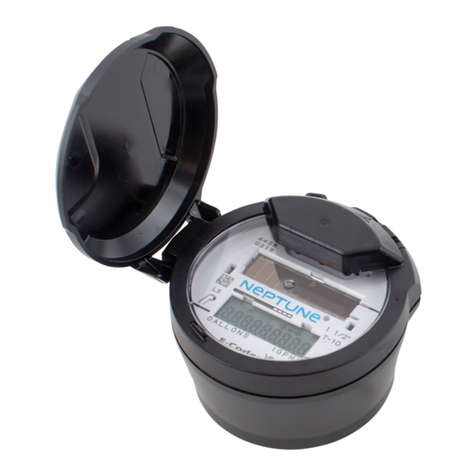
Neptune
Neptune E-CODER User manual

Neptune
Neptune HP PROTECTUS III Product manual

Neptune
Neptune E-CODER User manual
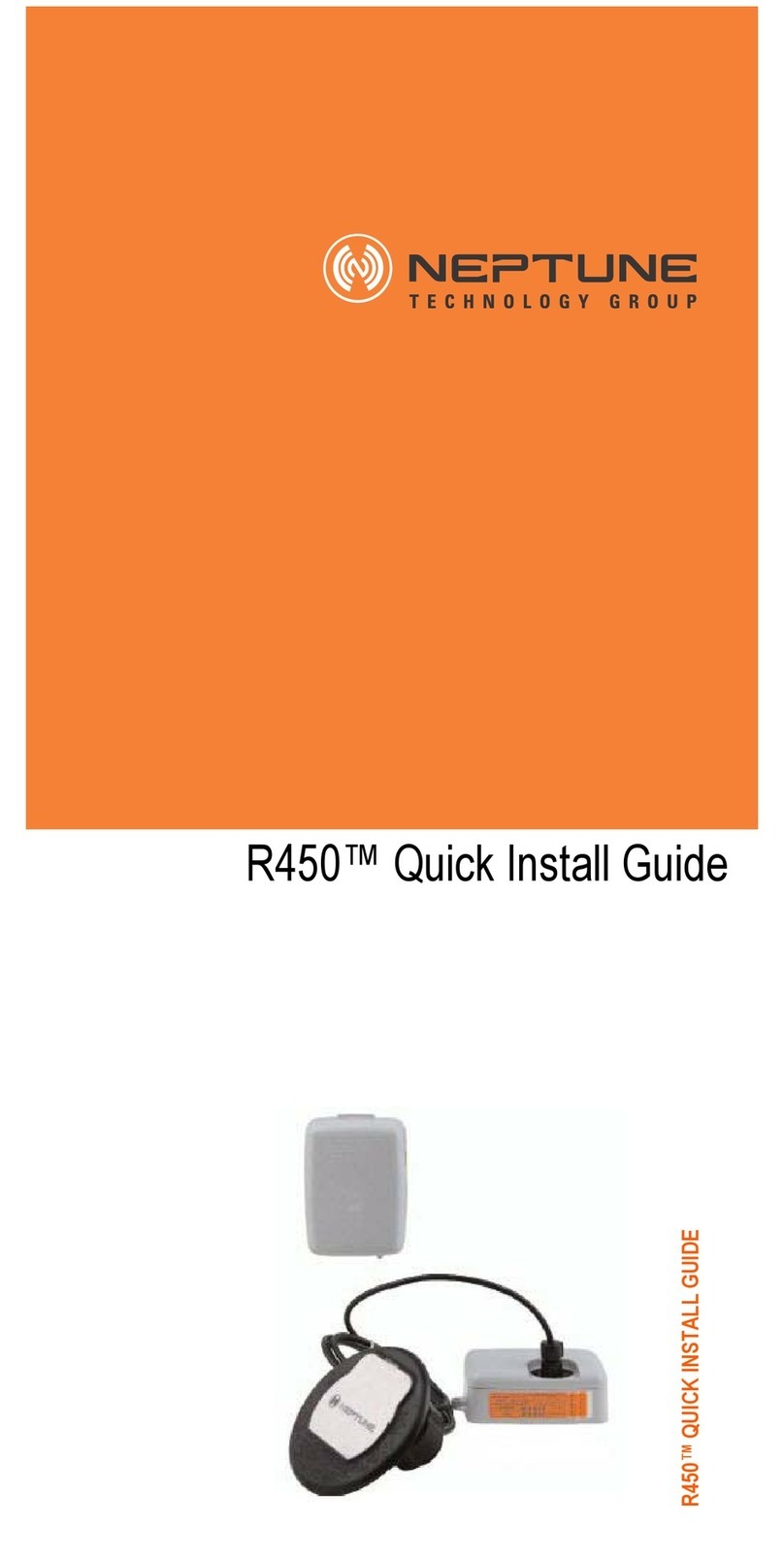
Neptune
Neptune R450 User manual
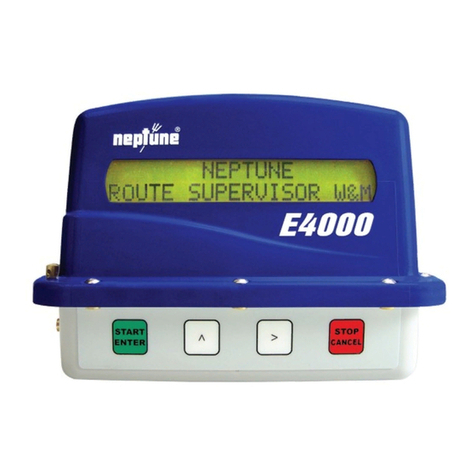
Neptune
Neptune E4000 Manual

Neptune
Neptune Leak Spy User manual
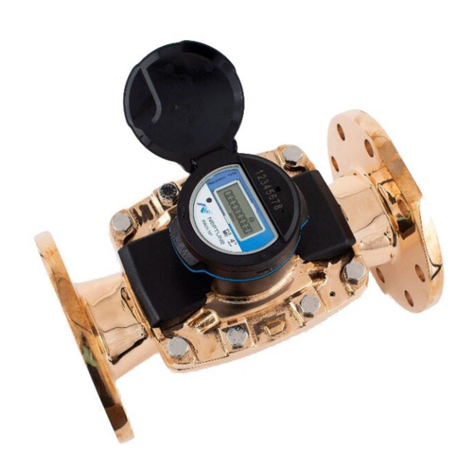
Neptune
Neptune MACH 10 Product manual

Neptune
Neptune E4000 User manual
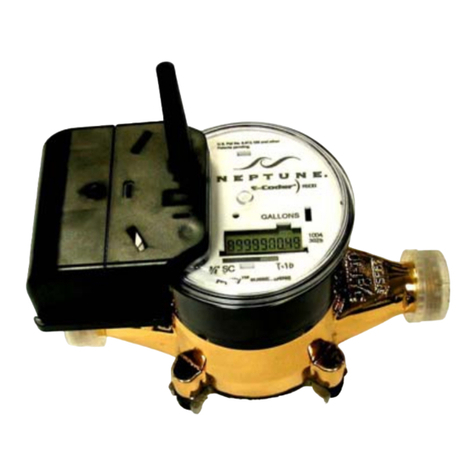
Neptune
Neptune R900 Product manual

Neptune
Neptune R450 User manual

Neptune
Neptune R450 Reference guide

Neptune
Neptune MACH 10 Product manual

Neptune
Neptune HP PROTECTUS III Product manual
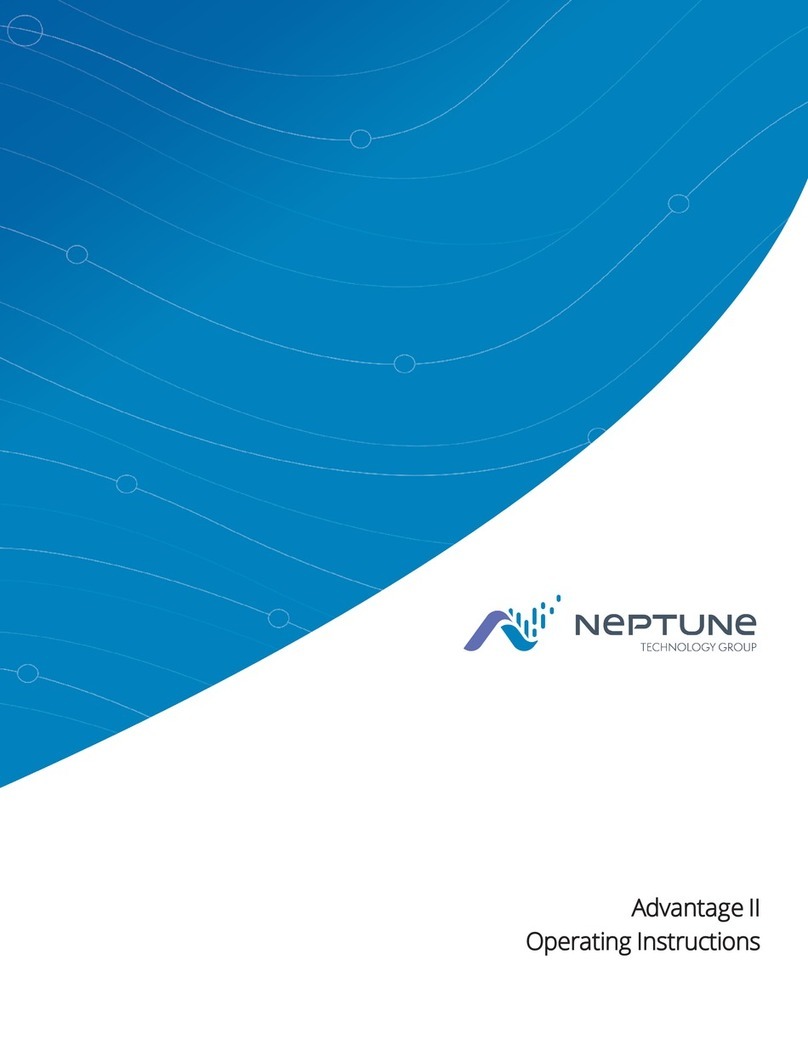
Neptune
Neptune Advantage II User manual
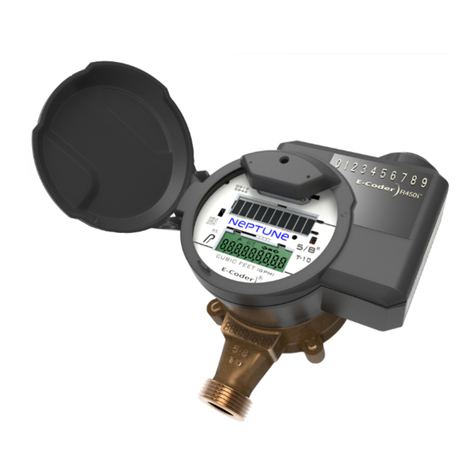
Neptune
Neptune E-CODER) R450i Product manual

Neptune
Neptune E4000 User manual
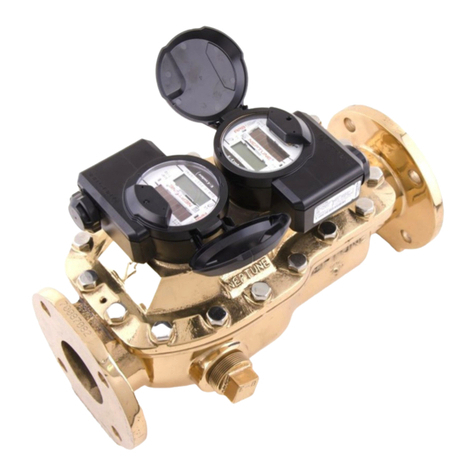
Neptune
Neptune TRU/FLO Product manual

Neptune
Neptune E4000 Manual
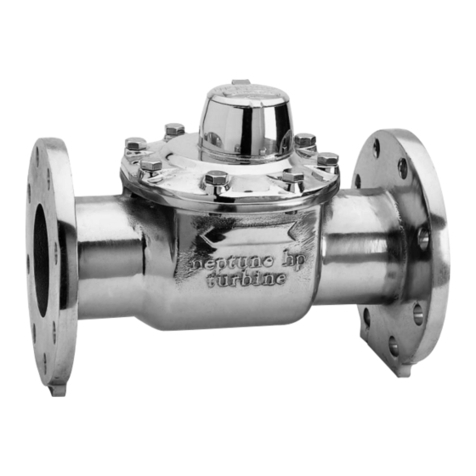
Neptune
Neptune HP Turbine Product manual
